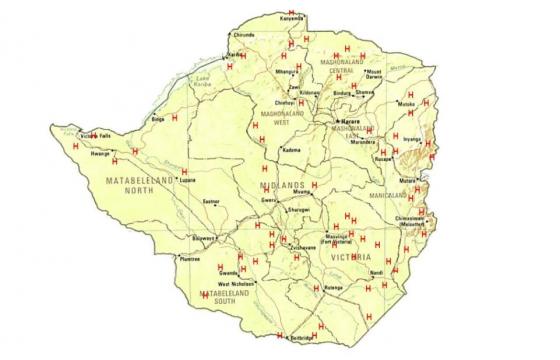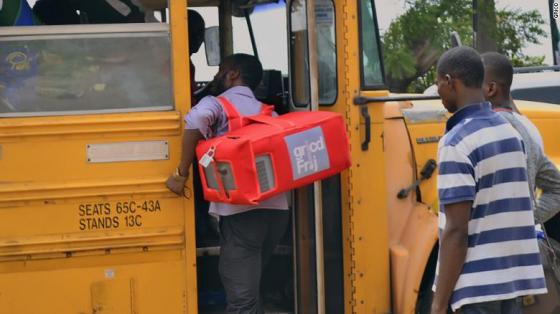Zimbabwe is getting just over 3 million COVID-19 vaccine doses and there has been one question that everyone has been asking “Who is going to get the vaccine and how is it going to be structured?“. As valid as this question is, it’s unfortunately not the most important question. The thing everyone should really be asking is “How are we going to get the COVID-19 vaccine to every corner of Zimbabwe?“
I guess at this point I need to tell you all why the second question is more important. Sometime last year I got a notification from one of my favourite YouTube channels, Wendover Productions. The video I got a notification for was titled “Distributing the COVID Vaccine: The Greatest Logistics Challenge Ever“.
In this video, Sam Denby (Wendover Productions) explored the mammoth task it would get the vaccine around the world. In his assessment, there were some really big hurdles for Africa for the following reasons.
The vaccines
Sam Denby detailed the requirements each one of the vaccines needs in order for it to be viable.
Pfizer-BioNTech
The first is Pfizer-BioNTech’s vaccine which needs to be kept at around -70 degrees celsius.
“We have specially designed, temperature-controlled thermal shippers utilizing dry ice to maintain recommended storage temperature conditions of -70°C±10°C for up to 10 days unopened. The intent is to utilize Pfizer-strategic transportation partners to ship by air to major hubs within a country/region and by ground transport to dosing locations.”
Pfizer COVID-19 Vaccine Fact Sheet
Moderna
Moderna’s vaccine is a little more forgiving but is still quite demanding. The vaccine needs to arrive frozen between -25°C and -15°C (-13°F and 5°F) but those temperatures are still quite low.
Oxford-AztraZeneca
This is the most forgiving of them all because it only needs to be kept at 2 degrees to 8 degrees Celsius (36 degrees to 46 degrees Fahrenheit) and can be stored for at least six months.
The things is, it is not as simple as saying let’s just get the Oxford-AstraZeneca vaccine. For one thing, we can’t pick and choose which vaccine we get, at this point we will have to take what’s available. The second is that the vaccines have varying degrees of effectiveness.
Pfizer’s reportedly has a 95% effectiveness where Moderna and AstraZeneca stand at 70.4% and 95.6% respectively (after 2 full doses). And to make everything fair COVAX (The COVID-19 Vaccines Global Access) proposed that there should an equitable distribution of the vaccine. This was also echoed by the allocation made by population size we reported on from the Advance Procurement Commitment (APC).
So in this, we should consider ourselves lucky that some people in Zim are going to get either the Pfizer or the AstraZeneca vaccine. The differences between the two ensure that for the remote areas the Oxford-AstraZeneca vaccine will be the obvious choice (because of it’s resilience) and for metropolitan areas the Pfizer-BioNTech vaccine because it is more temperature-sensitive.
But this leads us to the next problem, logistics
Cold chain storage infrastructure
As you can imagine we will need specialised shipping and storage facilities to house all of the vaccines. Africa and Zimbabwe to be specific aren’t best-suited for this. Beyond looking at the specialised cargo vehicles we will need to get it around Zim, our road network is not the best and this might mean certain areas might not be accessible for the vehicles carrying the vaccine.
The situation is made worse when we look at the distribution of electricity across Zimbabwe. There are areas where is no electricity and of course no facilities to house the vaccines at their required temperatures.
“We should have been designing the cold chain the day we started designing a vaccine.”
“We knew we were going to have to move billions of vaccines around the world, all the way out to rural communities, and that we’d need a temperature-controlled environment”
Toby Peters, Professor in Cold Economy at the University of Birmingham he is working with the UN-backed Africa Centre of Excellence for Sustainable Cooling and Cold Chain to improve refrigeration networks in Africa. (via CNN)
Prof. Toby Peters continued on to say that there could be as much 25% of vaccine could be lost with the existing cold chain network.
Have there been any workarounds/innovations to the logistics problem?
The one solution that is there in Zimbabwe is one that I am sure many of you may already be aware of. Back in 2014 Econet Zimbabwe and Energize the Chain (EtC) entered into a partnership that saw a number of remote sites getting efficient refrigeration equipment to house vaccines.
It seems like this network is going to be one of the pillars that will support the COVID-19 vaccine rollout in the country according to a report by TowerXchange.
“EtC first rolled out our programme in partnership with Econet in Zimbabwe, where we delivered hundreds of thousands of vaccines over the years all over the country. We are now in the process of updating that programme with the COVID-19 vaccine front of mind.”
Dr Harvey Rubin, Founder, Energize the Chain

That network is pretty extensive and looks like it will be best suited for the Oxford-Astrazeneca vaccine since it can be stored for longer and at much less harsh temperature. However, there is still a need for a mass mobilisation of refrigerated cargo carriers to get the vaccine doses to all those locations.
On that note, there has been innovation on the continent that Zimbabwe may be able to draw inspiration from. A Nigerian startup called Gricd has mobile solar-powered cold boxes that it can maintain a temperature of -20 degrees Celcius.
According to a report by CNN the company has worked with Nigeria’s CDC and the Nigerian Institute of Medical Research during the pandemic.

The company has also partnered with private healthcare companies in Egypt, Ghana and South Africa. These boxes (or ones like them) could help quickly distribute the vaccine in vehicles that can access remote areas. The container’s solar capability also means that they could be useful in places that don’t have electricity.
This is just the first wave of the vaccine rollout
The 3 million COVID-19 vaccine doses Zimbabwe is getting are just the first wave because the only limitation at present is how many doses can be made. To avoid the 25% (continent-wide) loss that was projected by Toby Peters, Zimbabwe has to do its part to make sure that all the available doses are transported and stored in the best possible manner.
We, unfortunately, can’t afford to have any slip-ups the first time around and we will need to iron out any of the issues to ensure that the second allocation has a much smoother rollout.
Cover Image Credit: BBC














Comments
2 responses
There’s a functional cold chain in zimbabwe which is already delivering other vaccines to all corners of the country with coverage well above 90%, the best in Southern Africa. So please gather your facts rights
We will manage. In 2014 I joined a UNDP programme that includes vaccinating children all over the country. We drive to the remotest parts of the country with “cooler boxes” packed with vaccines and ice packs to keep them cold.
Each day, we cover 3 clinics and vaccinate close to 600 babies, just the two of us. Village Health Workers would have mobilized the people beforehand, spread the word we are coming.
The systems and the equipment are in place. Bring in the vaccine.